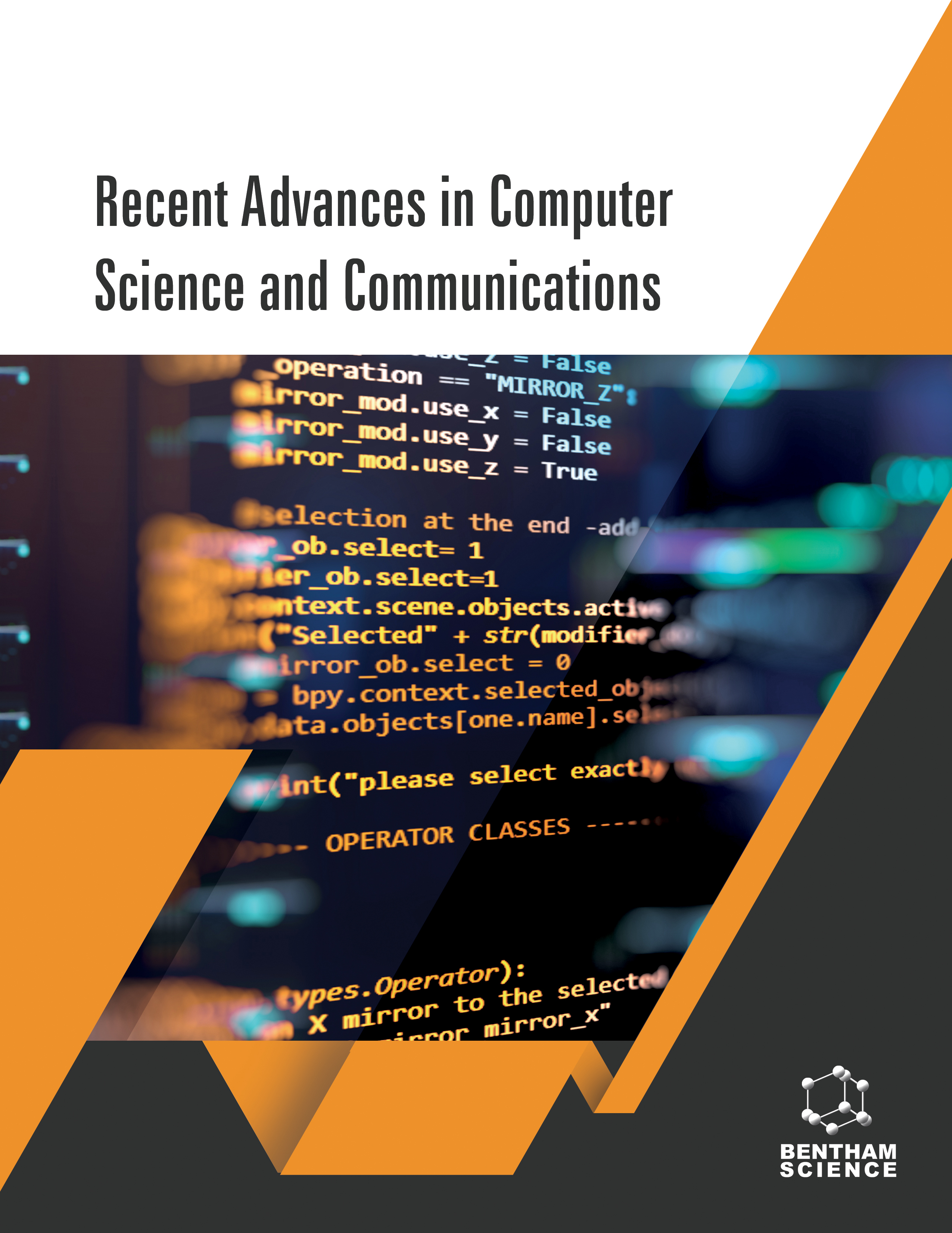- Home
- A-Z Publications
- Recent Advances in Computer Science and Communications
- Previous Issues
- Volume 17, Issue 3, 2024
Recent Advances in Computer Science and Communications - Volume 17, Issue 3, 2024
Volume 17, Issue 3, 2024
-
-
Broad-UNet-diff: Diffeomorphic Deformable Medical Image Registration based on Multi-scale Feature Learning
More LessAuthors: Tianqi Cheng, Lei Wang, Yuwei Wang, Xinping Guo and ChunXiang LiuIntroduction: To propose a medical image registration method with significant performance improvement. The spatial transformation obtained by the traditional deformable image registration technology is not smooth enough, and the calculation amount is too large to solve the optimization parameters. The network model proposed based on deep learning medical image registration technology has some limitations, which c Read More
-
-
-
A Novel DWT-ERT-based Fault Location for Distribution Network
More LessAuthors: Roshni Rahangdale and Archana GuptaBackground: A new DWT-ERT-based fault location method is suggested in the IEEE test feeder. Objective: The fault location approach in the distribution network has been proposed in this paper that utilizes the discrete wavelet transform (DWT) and ensemble regression tree (ERT). Methods: The fault location methodology has been validated by simulations conducted on an IEEE 13 bus node test feeder. Results: The Read More
-
-
-
Pneumonia Net: Pneumonia Detection and Categorization in Chest X-ray Images
More LessAuthors: Somya Srivastava, Seema Verma, Nripendra N. Das, Shraddha Sharma and Gaurav DubeyBackground: Pneumonia is one of the leading causes of death and disability due to respiratory infections. The key to successful treatment of pneumonia is in its early diagnosis and correct classification. PneumoniaNet is a unique deep-learning model based on CNN for identifying pneumonia on chest X-rays. Objective: A deep learning model that combines convolutional, pooling, and fully connected layers is presen Read More
-
-
-
A Comparative Analysis of Feature Selection Algorithms in Cross Domain Sentiment Classification
More LessAuthors: Lipika Goel, Sonam Gupta, Avdhesh Gupta, Neha Nandal, Siddhi N. Rajan and Pradeep GuptaBackground: Cross-domain Sentiment Classification is a well-researched field in sentiment analysis. The biggest challenge in CDSC arises from the differences in domains and features, which cause a decrease in model performance when applying source domain features to predict sentiment in the target domain. To address this challenge, several feature selection methods can be employed to identify the most relevant features Read More
-
-
-
Optimized Multi-objective Clustering using Fuzzy Based Genetic Algorithm for Lifetime Maximization of WSN
More LessAuthors: Shivendra K. Pandey and Buddha SinghBackground: Wireless Sensor Networks (WSNs) have gained significant attention due to their diverse applications, including border area security, earthquake detection, and fire detection. WSNs utilize compact sensors to detect environmental events and transmit data to a Base Station (BS) for analysis. Energy consumption during data transmission is a critical issue, which has led to the exploration of additional energy-saving tec Read More
-
-
-
s Supervised Rank Aggregation (SRA): A Novel Rank Aggregation Approach for Ensemble-based Feature Selection
More LessBackground: Feature selection (FS) is critical for high dimensional data analysis. Ensemble based feature selection (EFS) is a commonly used approach to develop FS techniques. Rank aggregation (RA) is an essential step in EFS where results from multiple models are pooled to estimate feature importance. However, the literature primarily relies on static rule-based methods to perform this step which may not always pro Read More
-
-
-
Motion Signal-based Recognition of Human Activity from Video Stream Dataset Using Deep Learning Approach
More LessAuthors: Ram Kumar Yadav, Daniel Arockiam and Vijay Bhaskar SemwalBackground: Human physical activity recognition is challenging in various research eras, such as healthcare, surveillance, senior monitoring, athletics, and rehabilitation. The use of various sensors has attracted outstanding research attention due to the implementation of machine learning and deep learning approaches. Aim: This paper proposes a unique deep learning framework based on motion signals to recogni Read More
-
Most Read This Month
Article
content/journals/rascs
Journal
10
5
false
en


